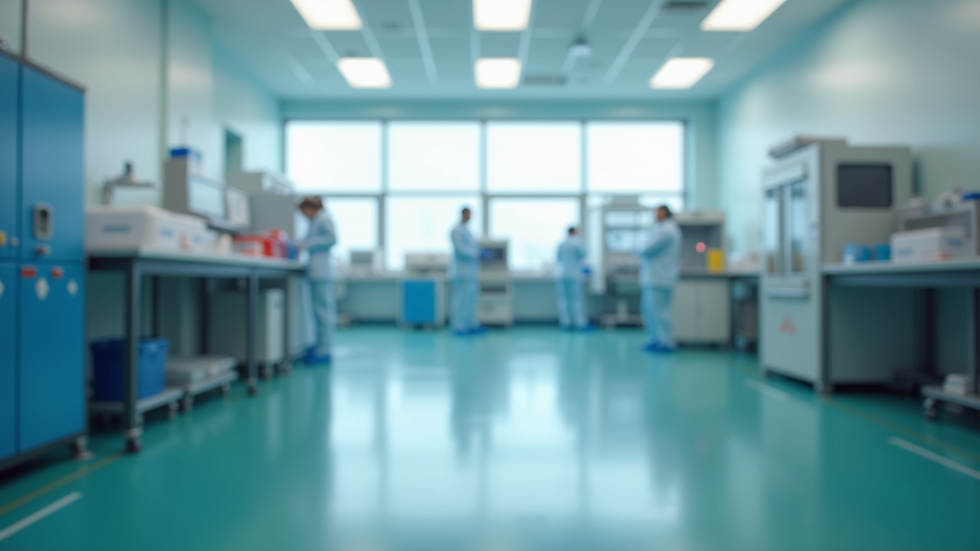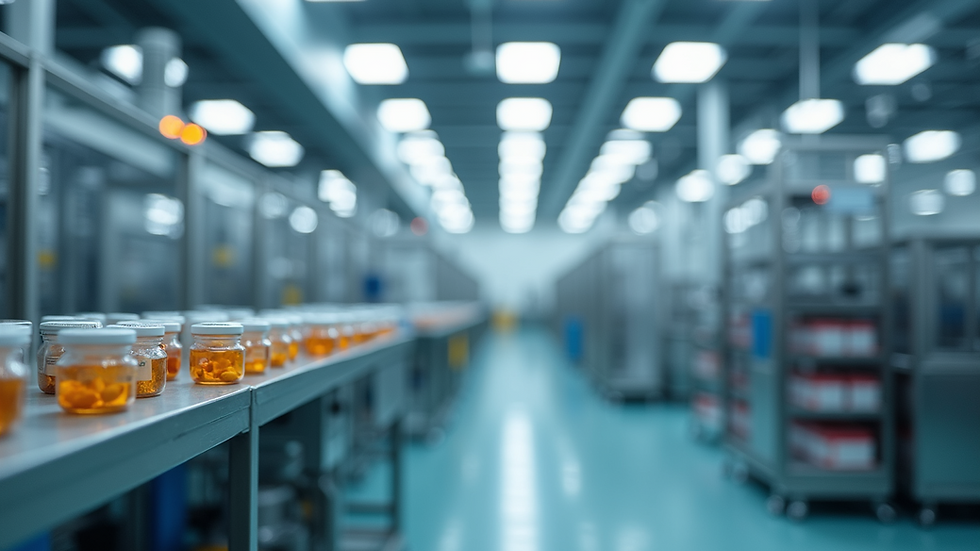Understanding the Complexities of Pharmaceutical Manufacturing
- Farbe Firma Admin
- Jun 19
- 4 min read
The landscape of pharmaceutical production is intricate, with many layers and processes culminating in the medications we rely on daily. Understanding this complexity not only demystifies the production of pharmaceuticals but also highlights the critical importance of quality and safety in medicine manufacturing.
The Journey of Pharmaceutical Production
Pharmaceutical production begins long before a drug reaches the store shelves. It starts with extensive research and development, where scientists investigate new compounds that show promise as potential therapies. This research phase can take years or even decades. For instance, it is estimated that only 1 in 5,000 discovered compounds ultimately gains approval from regulatory agencies to reach the market.

During the research phase, scientists conduct experiments to identify compounds with therapeutic effects. This stage involves preclinical testing, where compounds are tested in laboratories and then in animal models. The goal is to establish potential efficacy and safety before any human testing can begin.
Regulatory Framework for Pharmaceutical Manufacturing
Once research leads to a viable product, it must undergo clinical trials. Regulatory bodies, such as the FDA in the United States, oversee this process to ensure that all pharmaceutical products are safe and effective. The clinical trial process typically consists of three phases:
Phase 1: Involves a small group of healthy volunteers to assess safety and dosage.
Phase 2: Focuses on a larger group of patients to determine efficacy and side effects.
Phase 3: Tests the drug in thousands of patients to confirm its effectiveness, monitor side effects, and compare it to commonly used treatments.

Once clinical trials are successfully completed, a New Drug Application (NDA) is submitted, which must be reviewed by the regulatory authority. Approval can take several years, depending on the data provided and the complexity of the drug.
The Manufacturing Process
After successful approval, the pharmaceutical manufacturing process begins. This includes several stages:
Formulation and Development: This stage involves creating the final version of the drug with specific ingredients and materials. Each ingredient plays a vital role, either as the active pharmaceutical ingredient (API) or as an excipient that helps bind the formulation.
Production: The manufacturing stage transforms the formulated drug into a market-ready product. A facility equipped with advanced technology is necessary to maintain quality standards. These can include clean rooms where environmental contamination is minimized.
Packaging: Once produced, the next step is packaging. Packaging must meet strict guidelines regarding labeling, safety, and storage conditions to maintain the integrity of the drug.

Quality control is paramount throughout manufacturing. Companies conduct rigorous testing at every stage to ensure that every batch meets the defined quality standards. Adherence to Good Manufacturing Practices (GMP) is essential to prevent contamination and ensure the consistency of drug formulations.
The Role of Technology in Pharmaceutical Manufacturing
Technology plays a significant role in modern pharmaceutical manufacturing. Automation and high-tech equipment have revolutionized production efficiency and quality control.
Robotics: Robotic systems are increasingly used in manufacturing to reduce human error and improve precision in production processes. This is particularly useful in tasks like filling, packaging, and labeling.
Data Analytics: Advanced data analytics helps track production efficiency and identify possible areas for improvement. By analyzing data from the manufacturing process, companies can enhance their workflows and reduce costs.
Artificial Intelligence (AI): AI is increasingly being incorporated into drug development and manufacturing processes. It helps in predicting drug interactions, optimizing production lines, and even speeding up research initiatives.
Challenges in Pharmaceutical Manufacturing
Despite advances in technology and regulatory frameworks, the pharmaceutical manufacturing sector faces challenges:
Cost Management: The cost of developing and manufacturing medications is rising, making it harder for companies to turn profits. Research estimates that on average, developing a new drug can cost over $2.6 billion.
Supply Chain Issues: The global supply chain has been disrupted in recent years, affecting everything from raw ingredient availability to shipping logistics. Companies must be agile and adaptable to respond swiftly to these challenges.
Regulatory Compliance: Keeping up with evolving regulations can be daunting. Companies must invest significant resources to ensure compliance with local and international laws, which can differ vastly.
The Future of Pharmaceutical Production
The future of pharmaceutical production is poised for continued evolution, driven by innovation and demand for more effective therapies. Key trends that may shape the future include:
Personalized Medicine: As we learn more about genetics and individual responses to medication, there is a shift towards tailoring drugs to individuals' genetic profiles. This could enhance efficacy and reduce side effects.
Sustainability: With growing concerns about environmental impact, companies are beginning to adopt more sustainable practices in manufacturing. This includes sourcing raw materials responsibly and minimizing waste during the production process.
Global Collaboration: The complexities of drug development and manufacturing will increasingly call for international collaborations. By pooling resources and expertise, companies can accelerate the development of new therapies and respond better to global health crises.
In summary, understanding the complexities of pharmaceutical production involves recognizing the intricate processes, regulatory compliance, technological advances, and ongoing challenges. Being informed allows consumers to appreciate the depths of research, development, and manufacturing that go into the medications they rely on each day.





Comments